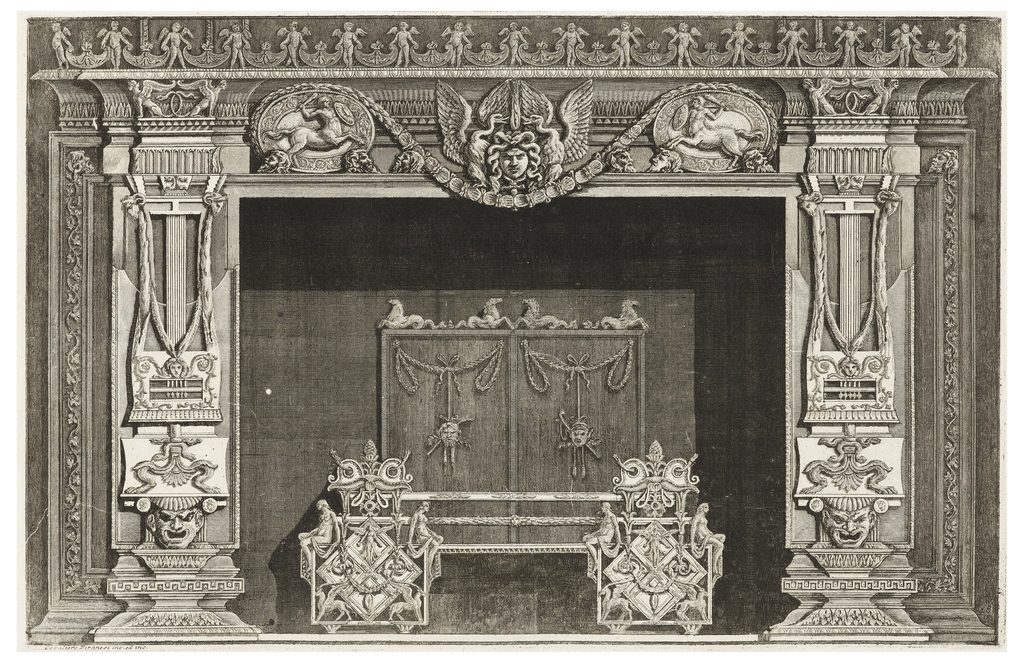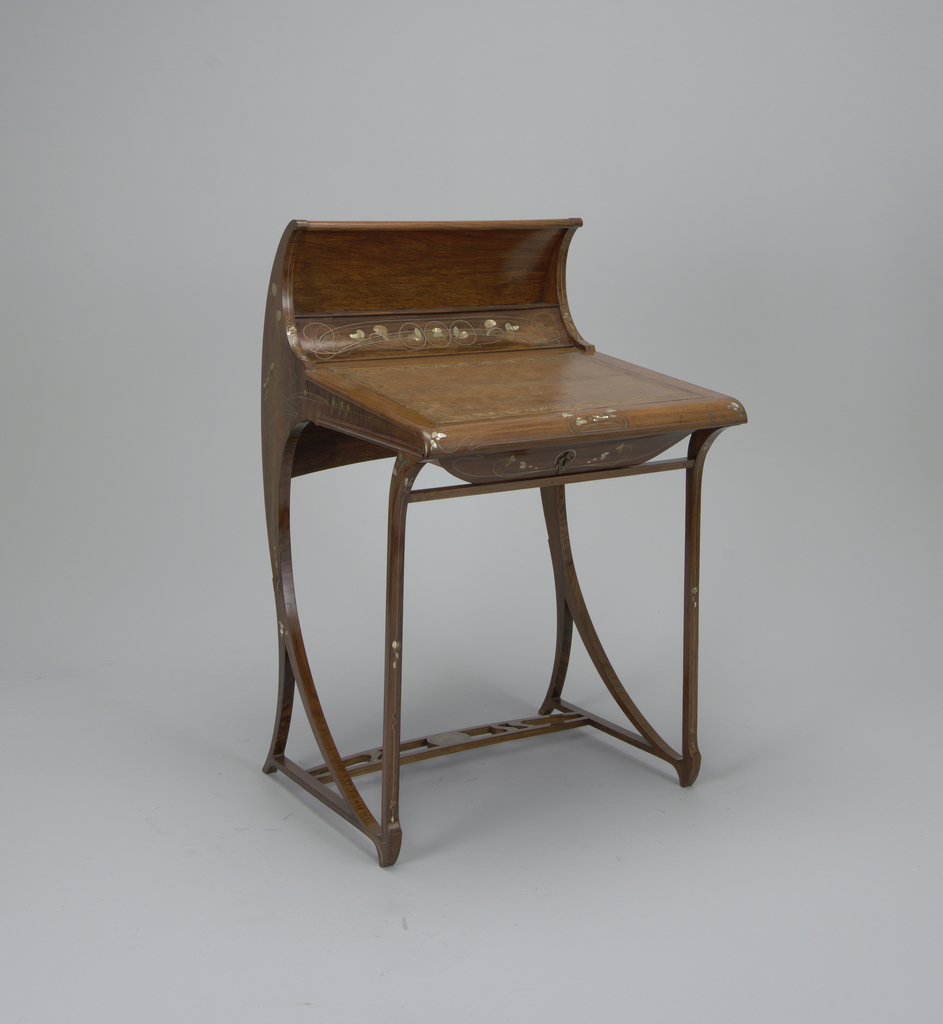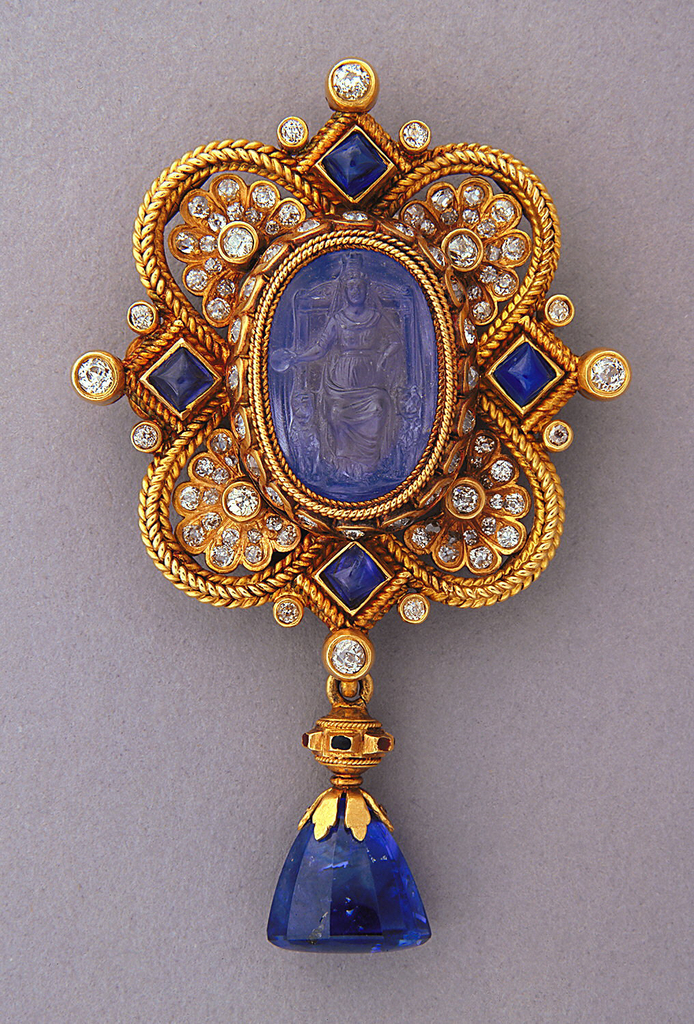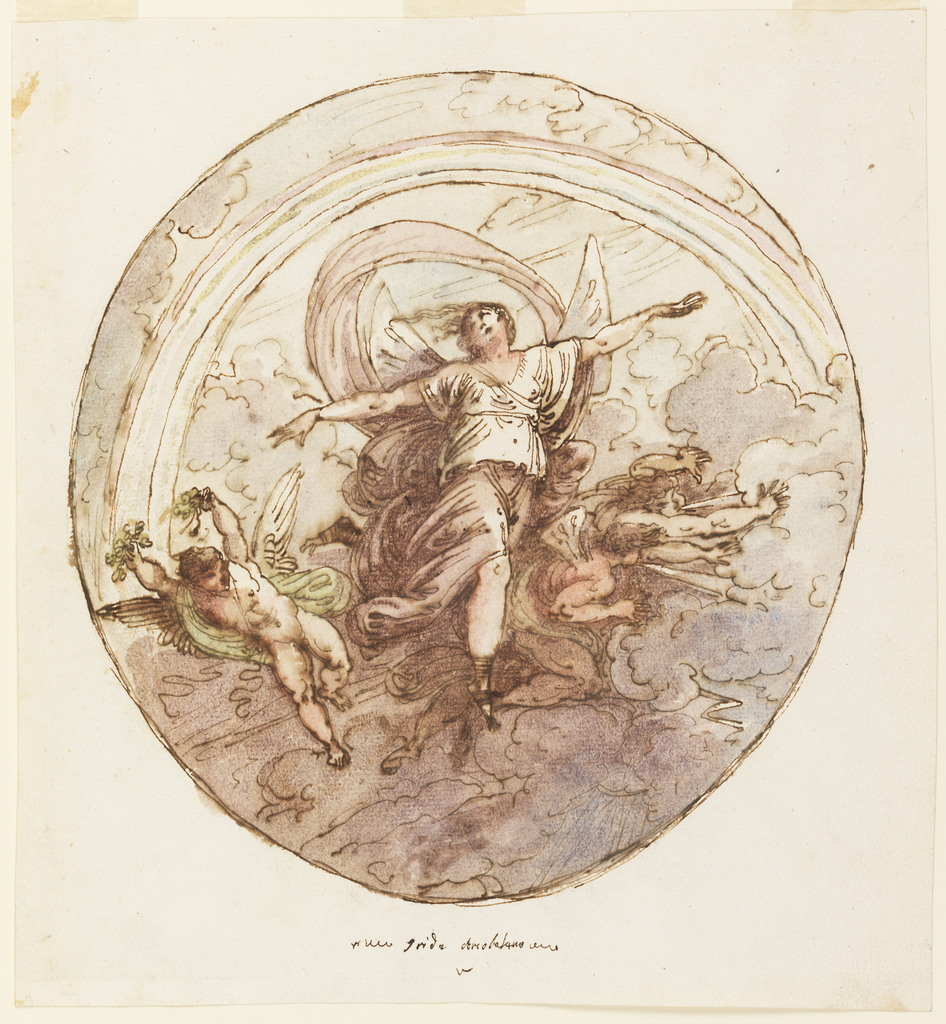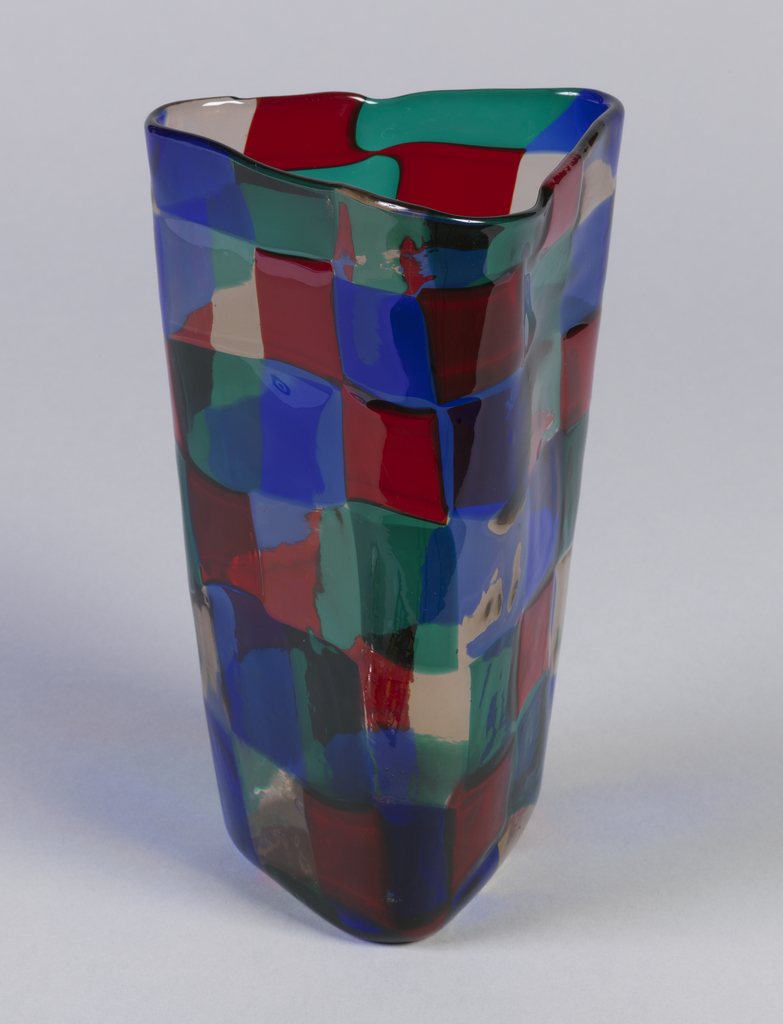This print comes from Giovanni Battista Piranesi’s Diverse maniere d’adornare I cammini ed ogni altra parte degli edifizi, published in 1769. Piranesi created designs inspired by ancient Roman aesthetic principles, which adopted elements of Egyptian, Grecian, and Etruscan motifs until fully absorbing them as their own. In this work particularly, Piranesi included motifs straight from...
This desk is an example of the Italian interpretation of the Art Nouveau style, known as Stile Floreale. This desk model was exhibited by Carlo Zen, a Milanese furniture manufacturer, at the 1902 First International Exposition of Modern Decorative Arts, in Turin, Italy. The exhibition helped Italy to show the rest of the world that...
The Castellani jewelry firm (1814 – 1927) became known for its “Italian Archaeological jewelry,”[1] which consisted of copies and imitations of Roman, Greek, and Etruscan jewelry. The firm’s works in this style became especially popular starting in the 1850s due to a rise in nationalism as a result of efforts to unify Italy, though they...
From high up in the heavens, the Greek goddess Iris strides forward, extending her arms in both directions. The drapery of her garments, caught by a forceful wind, clings to her legs and billows behind her. Although she seems embattled by the wind, with her head titled back and her body contorted, she remains a...
Murano, an island located just north of Venice, Italy, in the Laguna Veneta, has been a glass-making center since the late 13th century. This cheerfully colorful pezzato (dappled) vase was produced by the Venini Glassworks of Murano. Founded by Paulo Venini in 1925, the firm retained the great technical traditions of Venetian glass-working methods while developing a new...
